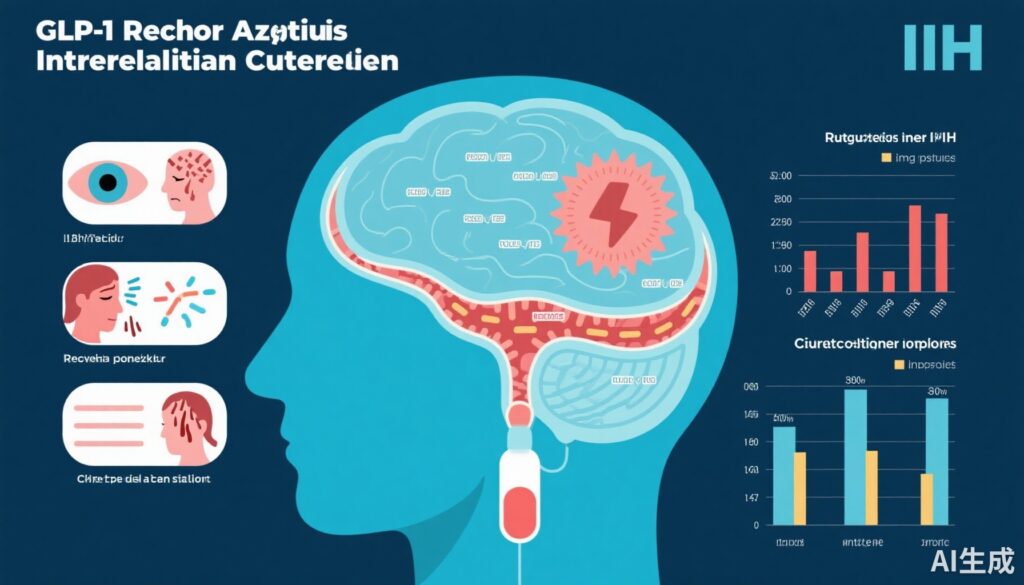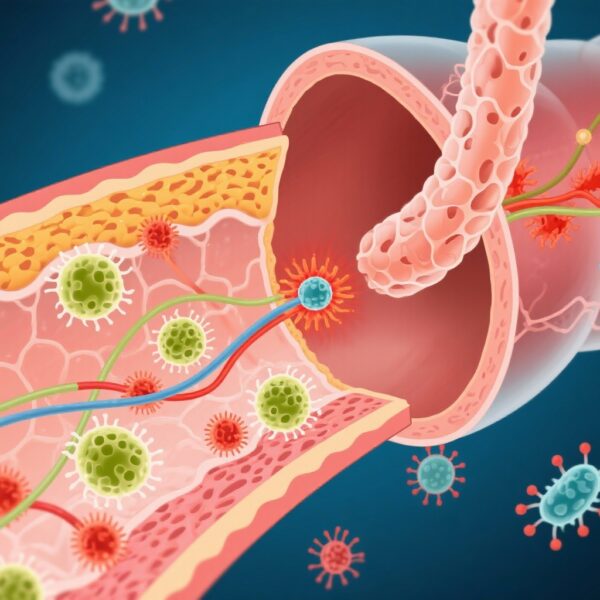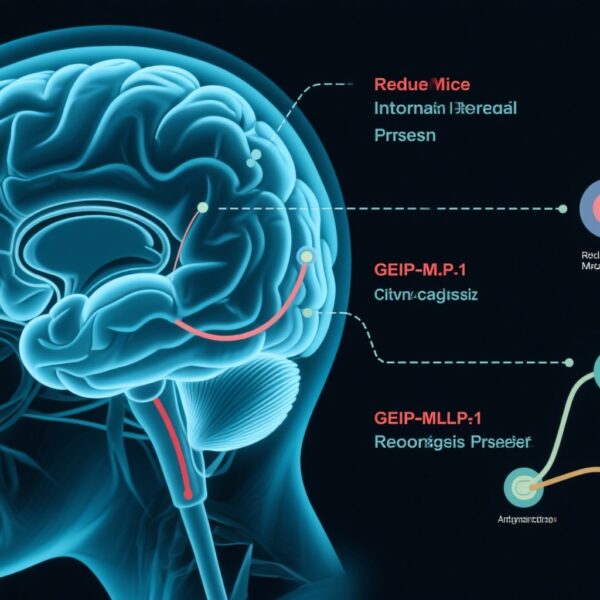Highlights
- GLP-1 receptor agonists (GLP-1 RAs) significantly improve clinical outcomes in idiopathic intracranial hypertension (IIH), including symptom reduction, lower medication reliance, and decreased procedural interventions.
- Associations observed between GLP-1 RA use and reduced mortality, papilledema, visual complications, and headache burden suggest benefits beyond weight reduction alone.
- Randomized controlled trials demonstrate that GLP-1 RAs, such as exenatide, effectively lower intracranial pressure (ICP) without adverse cognitive effects, supporting a novel mechanism of action.
- Evidence from large multicenter cohorts and meta-analyses advocate for GLP-1 RAs as promising non-invasive treatments for IIH, highlighting the need for further prospective and mechanistic studies.
Background
Idiopathic intracranial hypertension (IIH) is a disorder characterized by elevated intracranial pressure (ICP) without an underlying mass lesion or hydrocephalus, predominantly affecting obese women of childbearing age. IIH manifests with symptoms such as headache, visual disturbances, and papilledema, leading to potential vision loss and significant morbidity. Current treatment options—acetazolamide, topiramate, weight management, and invasive procedures like cerebrospinal fluid (CSF) shunting or venous sinus stenting—are hampered by limited efficacy, adverse effects, and sustainability concerns.
Glucagon-like peptide-1 receptor agonists (GLP-1 RAs), originally developed for type 2 diabetes mellitus due to their metabolic effects, have demonstrated pronounced weight loss and favorable effects on cerebrospinal fluid dynamics in preclinical studies. Given weight reduction is a cornerstone for IIH management, and GLP-1 RAs can modify ICP via direct central mechanisms, these agents represent a promising novel approach for IIH treatment.
Key Content
Chronological and Evidence-Based Development of GLP-1 RAs in IIH
The exploration of GLP-1 RAs for IIH began with preclinical studies showing reductions in CSF secretion and intracranial pressure mediated by GLP-1 receptor signaling pathways. This led to early-phase clinical trials assessing exenatide in IIH patients.
In 2023, a randomized, placebo-controlled double-blind clinical trial by Moreau et al. (Brain 2023) enrolled 16 women with active IIH. Subcutaneous exenatide administration significantly lowered ICP at 2.5 hours (-5.7 cmCSF), 24 hours (-6.4 cmCSF), and 12 weeks (-5.6 cmCSF), establishing proof of concept for GLP-1 RA’s ICP-lowering effect. There were no serious safety concerns, and cognitive function was not detrimentally affected (as confirmed in a related study published in Eye 2024 by Matharu et al.).
Real-World and Retrospective Cohort Evidence
Using large electronic health record datasets from the TriNetX US Collaborative Network, Sioutas et al. (JAMA Neurol 2025) performed a retrospective propensity-matched cohort study comparing 603 GLP-1 RA users to 43,770 nonusers. After matching 555 pairs, GLP-1 RA therapy was associated with statistically significant reductions in medication use (RR 0.53), headaches (RR 0.45), visual disturbances/blindness (RR 0.60), papilledema (RR 0.19), neurosurgical procedures (RR 0.44), and mortality (RR 0.36). Importantly, BMI at 1 year did not differ significantly between groups, signaling benefits beyond weight loss. Sensitivity analyses across BMI strata maintained these associations.
Parallel multi-institutional studies corroborated these findings. A propensity-matched cohort study of 5,750 GLP-1 RA users versus controls demonstrated greater BMI reduction at 6 and 12 months and significantly lower odds of headaches, visual and cognitive deficits, acetazolamide use, and neurosurgical shunting, persisting at 1 year (J Neurosurg 2025). Another investigation focusing on neurosurgical interventions revealed GLP-1 RA use corresponded to significantly lower odds of venous sinus stenting and ventriculoperitoneal shunting at 5 weeks and 6 months post-treatment initiation (J Neurointerv Surg 2025).
Meta-Analytic Synthesis
A recently published systematic review and meta-analysis encompassing two clinical trials and two registry datasets with 1,550 IIH patients (Eur J Neurol 2025) found GLP-1 RAs and dual GIP/GLP-1 RAs significantly reduced the risk of papilledema (RR 0.25), visual disturbances/blindness (RR 0.41), and showed a trend toward headache risk reduction. Monthly headache days were reduced by approximately 3.6 to 4.8 days at 3 months and study endpoints. No significant BMI differences were noted, and the safety profile indicated mild gastrointestinal adverse effects without treatment discontinuations.
Mechanistic Insights and Translational Implications
GLP-1 RAs reduce ICP possibly through modulation of CSF secretion and absorption, as suggested by preclinical models. Additionally, their anti-inflammatory and neuroprotective properties may contribute to symptom amelioration and protection against visual loss. The dissociation between clinical improvement and BMI changes implies weight-independent mechanisms.
Furthermore, cognitive function assessments in small clinical studies indicated no adverse cognitive effects with exenatide and even potential improvements in fluid intelligence and processing speed, essential considerations for long-term therapy.
Expert Commentary
The accumulating evidence positions GLP-1 RAs as promising adjuncts or alternatives to conventional IIH management. The consistent reduction in key symptomatic and objective clinical outcomes, including mortality and neurosurgical intervention, is compelling. Importantly, the safety profile appears favorable, with manageable side effects.
These findings challenge the prior assumption that weight loss is the principal mediator of improvement in IIH; GLP-1 RAs may exert direct intracranial pressure-lowering effects. This expands therapeutic possibilities, especially for patients unable to achieve significant weight loss or tolerate current medications.
Limitations of existing research include the observational design of large cohort studies, potential residual confounding despite propensity matching, and relatively small sample sizes in randomized trials. The variability of GLP-1 RA agents and dosing regimens also warrants standardization.
Clinical guidelines have yet to incorporate GLP-1 RAs for IIH due to insufficient prospective trial data. Nevertheless, the ongoing phase 3 trials and increasing real-world evidence suggest an imminent role. Caution remains necessary to monitor long-term safety and potential off-target effects.
Conclusion
GLP-1 receptor agonists represent an innovative and effective treatment strategy in idiopathic intracranial hypertension, demonstrating benefit in symptom control, reduced reliance on other pharmacotherapies, decreased surgical interventions, and mortality reduction. Their effects appear to extend beyond metabolic weight loss, highlighting novel mechanistic pathways for ICP regulation.
Future well-powered, prospective randomized clinical trials are needed to define optimal candidates, dosing strategies, and comparative efficacy. Integration of GLP-1 RAs into clinical practice may transform IIH management, improving patient quality of life and long-term outcomes.
References
- Sioutas GS, Mualem W, Reavey-Cantwell J, Rivet DJ 2nd. GLP-1 Receptor Agonists in Idiopathic Intracranial Hypertension. JAMA Neurol. 2025;82(9):887-894. doi:10.1001/jamaneurol.2025.2020. PMID:40658395.
- Moreau CA, et al. The effect of GLP-1RA exenatide on idiopathic intracranial hypertension: a randomized clinical trial. Brain. 2023;146(5):1821-1830. doi:10.1093/brain/awad003. PMID:36907221.
- Matharu MS, et al. Effect of GLP-1 receptor agonist exenatide on cognition in IIH. Eye (Lond). 2024;38(7):1374-1379. doi:10.1038/s41433-023-02908-y. PMID:38212401.
- Sioutas GS, et al. Impact of GLP-1 receptor agonists on IIH clinical and neurosurgical outcomes: a propensity-matched multi-institutional cohort. J Neurosurg. 2025;143(4):1037-1047. doi:10.3171/2025.1.JNS242357. PMID:40344770.
- Peterson NJ, et al. Association between GLP-1 receptor agonist use and neurosurgical intervention in patients with IIH and obesity. J Neurointerv Surg. 2025; Sep 23: jnis-2025-024139. doi:10.1136/jnis-2025-024139. PMID:40987589.
- Wang J, et al. Efficacy and safety of GLP-1 and dual GIP/GLP-1 receptor agonists in IIH: a systematic review and meta-analysis. Eur J Neurol. 2025;32(9):e70358. doi:10.1111/ene.70358. PMID:40937960.



